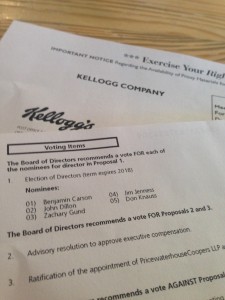 A version of this post ran in the San Antonio Express News.
A version of this post ran in the San Antonio Express News.
Dear Michael,
Next January, when I receive the proceeds for a house I’m selling, I’m considering converting 70K from my TIAAF-CREF Traditional IRA into a Roth IRA, and paying taxes to do that that. I could then make my 7 grandchildren the beneficiaries and plan to not spend any of the Roth IRA myself unless I was desperate. I am 72 years old now, and my seven grandchildren range in age from 4 to 18. Could you make a spreadsheet to show me – and them – how nice that would be for them if I died at 90 and they received tax free income until they are all age 72 themselves?
Thanks,
Julie from Massachusetts
Dear Julie,
Thanks for your question. You’ve highlighted one of the cool and little-discussed features of the Roth IRA, a potentially magical low-cost estate-planning tool for passing on tax-free income to young heirs.
The Roth IRA magic I’m about to describe happens because of three features unique to Roth IRAs.
First – unlike a traditional IRA – all withdrawals from an inherited Roth IRA are tax free to the beneficiary. Roth IRAs, we recall, require income taxes to be paid up front, either when a contribution is made, or in the case of Julie, when an existing Traditional IRA converts to a Roth IRA.
Second – also unlike a traditional IRA – you are not required to make any withdrawals from your Roth IRA in your own lifetime. If you can manage to survive without pulling out money from your Roth – as Julie referenced in her question – then you can leave that much more money for your heirs.
Third – heirs can withdraw money slowly enough from their inherited Roth IRA that their little nest egg can actually grow over time. The IRS has a schedule for inherited IRAs that shows how to calculate just how slowly money may be withdrawn.
By exactly how much money will the grandchildren benefit, and how does it all work?

The total value
I’ll take Julie’s example and run through the numbers, but let me hit you with the punch-line first:
Julie’s nest egg would produce nearly $1.2 million of tax free income for her grandchildren.
Here’s some fine print on that punchline: $1.2 Million of tax-free income assumes Julie starts with $70,000 next year; She dies at age 90; all of her grandchildren take only their minimum distributions until they turn 72; the accounts earn 6% per year; and each grandchild receives the total remaining value of their inherited Roth IRAs at age 72.
If I keep all of those above assumptions, except I dial down the annual return to a more conservative 3% return per year, her grandchildren receive $273,054 in total tax free income.
But what about the following?
If I dial up the annual return to a more optimistic 10% per year, her grandchildren would receive a total of $9.2 million in tax free income. 1
Now that I have your attention, how does the Roth IRA achieve this magic trick?
The magic happens over two phases, Julie’s life, and her grandchildren’s lives.
Julie’s Life
Traditional IRAs 2 require an owner to withdraw a portion of their retirement account as income every year after age 70.5. The IRS publishes a list for IRA owners age 70.5 and older about their required minimum distribution, roughly determined by the retiree’s expected remaining lifespan.
According to the IRS, A 72-year old like Julie would be required to divide the value of her IRA by 25.6 (the same divisor goes for all 72 year-olds), and take at least that amount out of her traditional IRA as income. 3
With a $70,000 Traditional IRA, Julie must withdraw at least $2,734.38 at age 72, (because that’s $70,000 divided by 25.6).
With a $70,000 Roth IRA, however, she is not required to withdraw anything.
If Julie is able to survive on rice and beans (and Social Security, and other savings) without drawing from her Roth IRA, the account will certainly grow for the next 18 years. At a 6% annual growth rate, her Roth IRA would reach $188,494 when she reaches age 90. At which point we assume each of 7 grandchildren inherits a Roth IRA worth $26,928 (because that’s $188,494 divided 7 ways).
The grandchildren’s lives
An inherited Roth IRA requires an heir to make minimum withdrawals, but in small amounts determined by the age of the heir. The minimum withdrawal amount is determined by the value of the Roth IRA divided by the expected lifespan of the heir.
The key here to the Roth IRA magic is that Julie’s grandchildren are relatively young, and the IRS allows young people with a long expected lifespan to withdraw money from inherited IRAs quite slowly.
So slowly, in fact, that each grandchild’s account is likely to grow over time, under reasonable annual return assumptions.
The eldest grandchild
Julie’s eldest grandchild, now age 18, would be aged 36 when Julie is 90. The grandchild could elect to take the inherited $26,928 all at once, but would be advised not to do so.
Instead, she should allow the account to grow over time, kicking off a growing amount of tax free income per year over the course of her lifetime.
At age 36, the eldest grandchild has an expected remaining life of 47.5 years, so could elect to take the minimum of tax free income of $555 (because that’s $26,928 divided by 47.5).
With that minimum withdrawal, assuming a 6% return, the account will grow each year. Withdrawals will increase each year as well, up to $4,136 when she is 72 years old, when the account will be worth $67,424.
The youngest grandchild
For the youngest grandchild, the deal is even sweeter. She would inherit $26,928 at age 23. Her original minimum withdrawal of tax free income would be $448 (that’s $26,928 divided by her expected remaining lifespan of 60.1 years). Minimum withdrawals would grow up to as much as $7,090 by age 72, at which point the account would be worth $109,903.
The younger the heir, the higher the potential for maximizing this Roth IRA magic, which can produce tax free income for life, long after the original retiree has passed.
In the most optimistic scenario, if markets return over the next 100 years at the rate they have in the past 100 years (a key “if”) Julie’s conversion of her relatively modest $70K Traditional IRA into a Roth IRA would produce close to $10 million in future tax free income for her grandchildren.
Please see related posts:
Estate Tax – My Problems With It
Post read (1898) times.
- Incidentally, even though past performance is not indicative of future results, the S&P500 (including reinvestment of dividends) has earned 11.7% over the past 40 years. ↩
- Just like other retirement accounts such as 401Ks and 403bs ↩
- As a retiree ages and her remaining lifetime shortens, the IRS requires the retiree to divide by a smaller number, leading to higher distributions. A 90 year old must divide her traditional IRA account value by 11.4 for example, so would have to take out a minimum of $6,140 on a $70,000 account (because that’s $70,000 divided by 11.4). ↩











